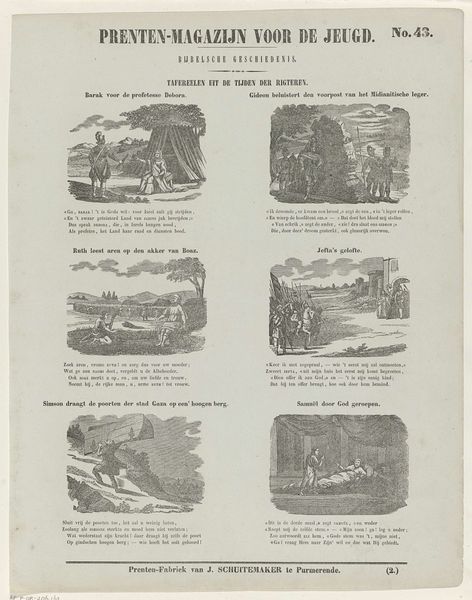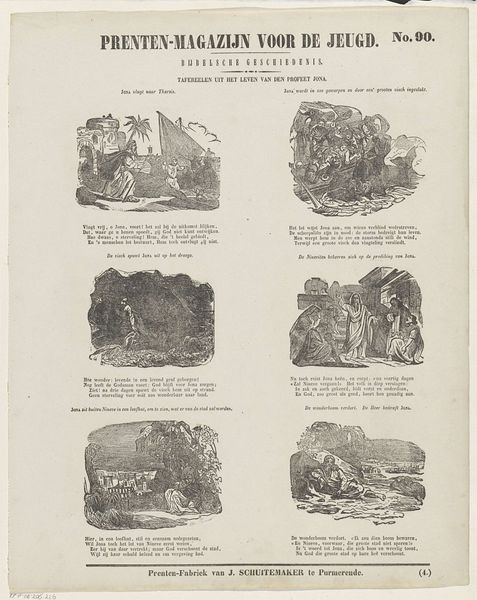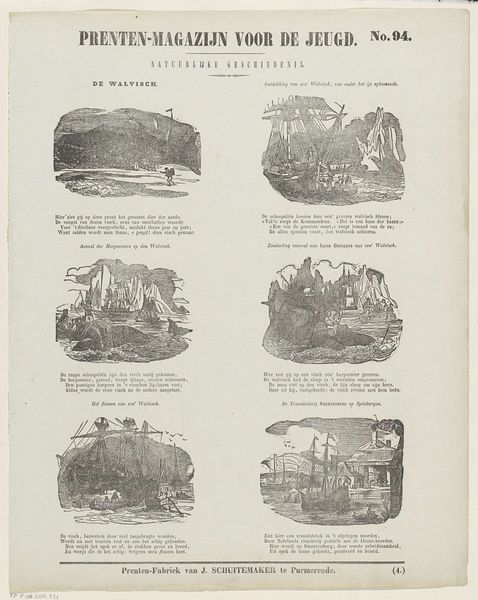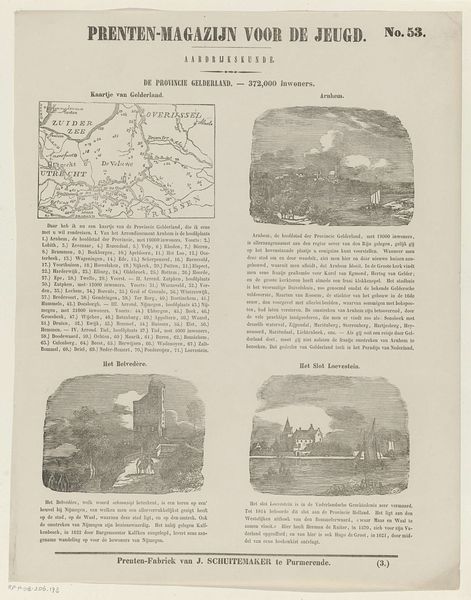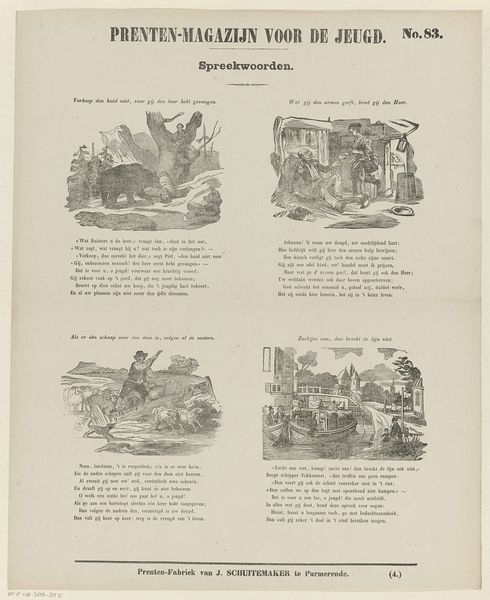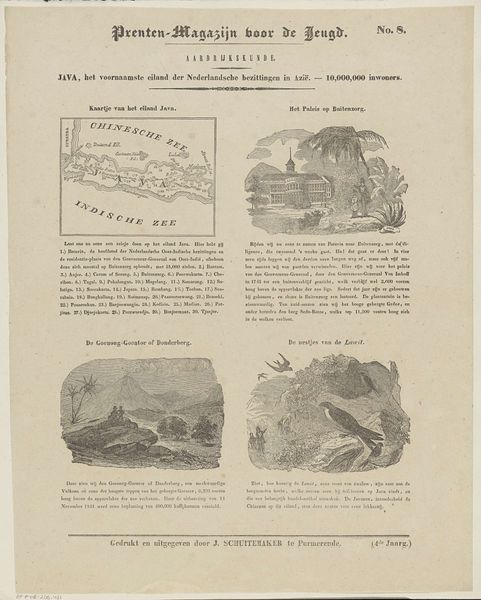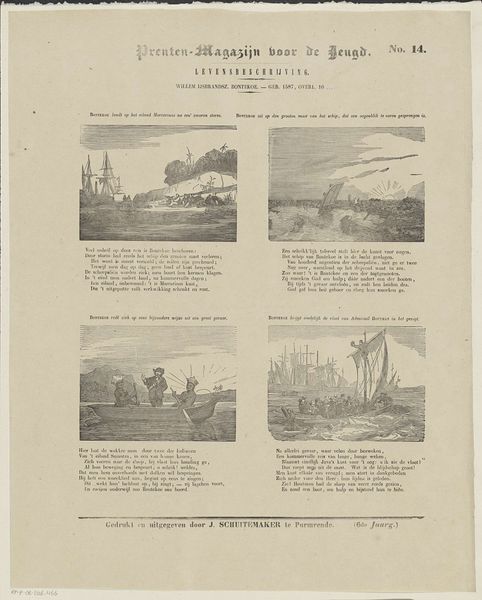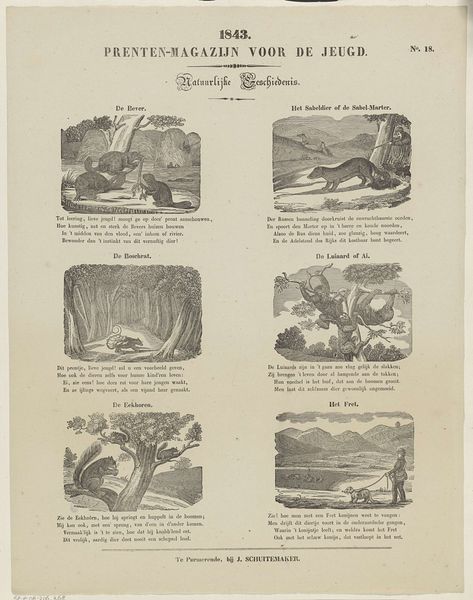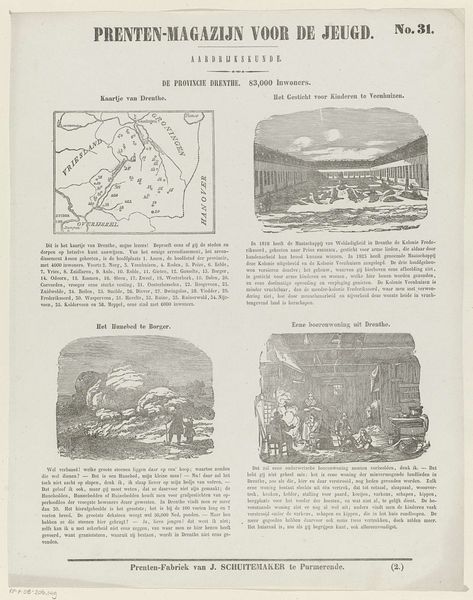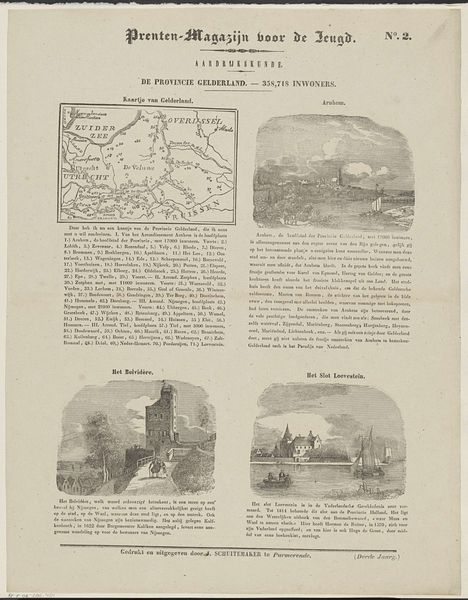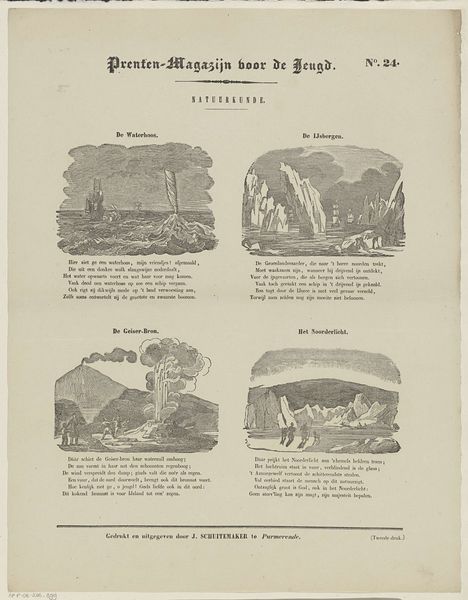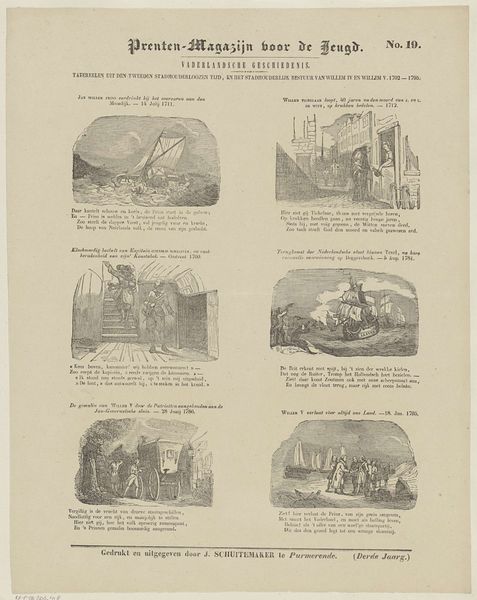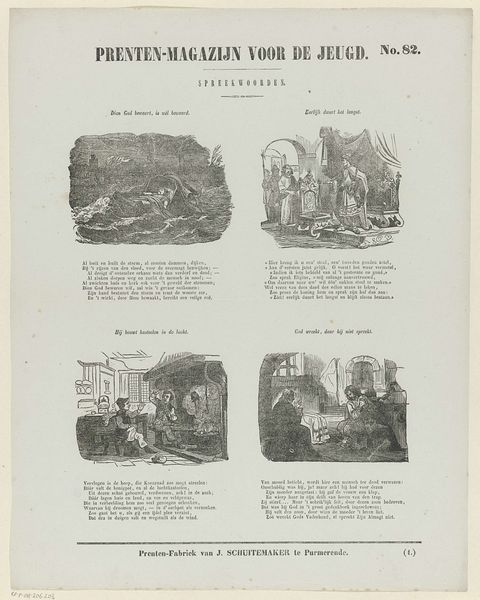
drawing, lithograph, print, paper
#
drawing
#
dutch-golden-age
#
lithograph
# print
#
paper
#
naturalism
Dimensions: height 415 mm, width 324 mm
Copyright: Rijks Museum: Open Domain
Curator: This print, entitled "Amphibieen of tweeslachtige dieren," was created around 1850 by Jan Schuitemaker. It appears to be a lithograph drawing printed on paper, a collection of natural history studies. Editor: Immediately, I feel transported. Each little scene is a small world. I love the monochromatic tones – everything melts together, yet each creature has its own personality. There’s almost a storybook feel to it, wouldn't you say? Curator: The magazine was "Prenten-Magazijn voor de Jeugd" -- translated to "Print Magazine for Youth." So this image, with the illustrations showing a crocodile, chameleon, toad, frog, dragon, and turtle would've served as a learning resource. Printmaking like this, was becoming widely popular to deliver visual culture and stories. Editor: Look how meticulously rendered each animal is! I especially love the dragon or "Drank". It's so dark. Do you think Schuitemaker personally observed all these creatures? The Chameleon appears so grumpy. Curator: Given the era, Schuitemaker probably relied on existing visual and textual sources. Scientific illustration had been codified, so accuracy and recognizable depictions were more important than firsthand experience. Note that Schuitemaker signs his work here not as "artist" but "printer" further showcasing the industrialized production process here. Editor: Still, I sense an undeniable curiosity! There’s a childlike wonder present, especially toward these "amphibious or hermaphrodite animals," as the title translates. It makes me consider what childhood experiences Schuitemaker experienced to undertake a project such as this! Curator: Indeed. By placing the prints within the framework of children's educational material, the illustrations are given value and respect, legitimizing what might seem like an overly expressive interpretation. It certainly allowed Schuitemaker to distribute and potentially profit. Editor: Thinking about how this work engages imagination in learning, I realize these natural history guides open portals to a more wonderous world than the textbook could. Curator: Right, it is a reminder that imagery, scientific or otherwise, can shape our understanding. Editor: And reminds us of the artist's influence over even scientific data.
Comments
No comments
Be the first to comment and join the conversation on the ultimate creative platform.
